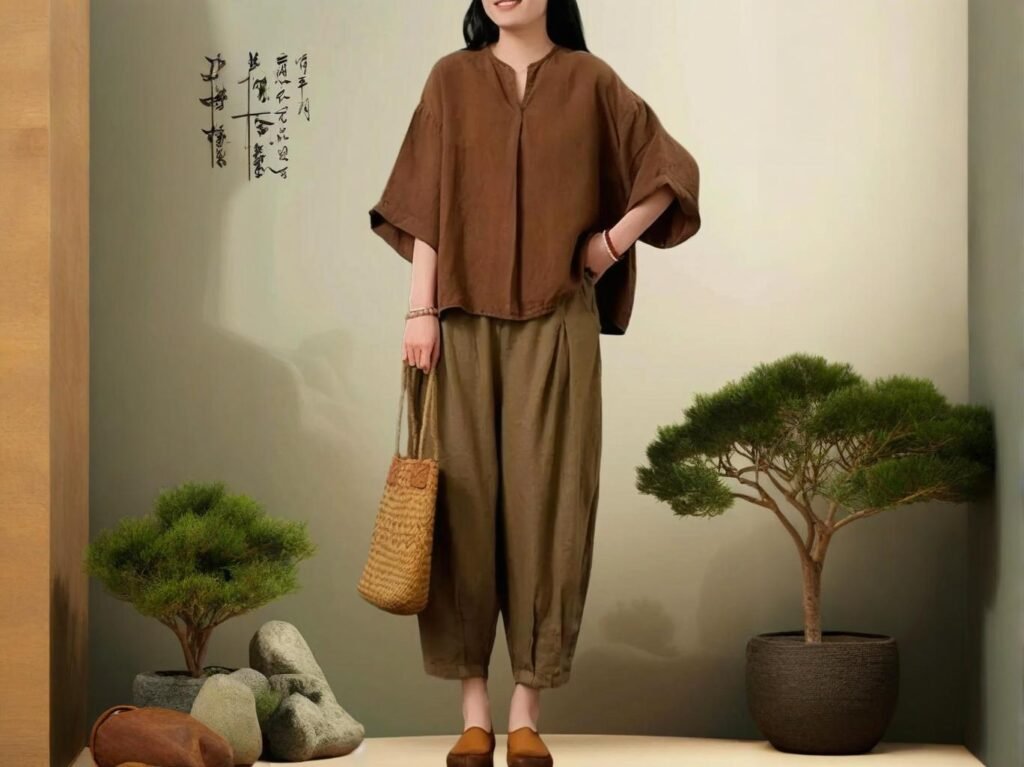
In today’s fast-moving textile industry, brands and B2B buyers are under increasing pressure to reduce product development cycles. Whether it’s for seasonal launches or custom fabric runs, lead time can make or break a project. While hemp has gained popularity for its sustainability, ramie is quietly winning the race for speed. Why?
Ramie fabric has shorter lead times than hemp primarily due to its simpler processing steps, more localized supply chains, faster harvesting cycles, and easier dyeing and finishing compatibility. These advantages reduce both production complexity and wait time—making ramie a preferred choice for time-sensitive buyers.
Let’s take a real-world example: A European fashion label sourcing sustainable textiles ordered both hemp and ramie samples from two Chinese manufacturers. While the hemp sample arrived in 23 days due to prolonged retting and fiber treatment, the ramie sample took just 9 working days, ready for garment testing. This speed difference helped the brand meet its product development deadline—and launched ramie into their main collection.
Now, let’s dig deeper into the details behind this speed advantage.
What Is Ramie Fabric and How Does It Compare to Hemp?
Ramie is a bast fiber like hemp, but it’s derived from the Chinese nettle plant (Boehmeria nivea) and is known for its silky texture, natural luster, and rapid processing time. Compared to hemp, ramie is easier to extract, process, and weave, which contributes to significantly shorter lead times.
Comparing the Basics of Ramie vs. Hemp
1. Botanical and Harvesting Differences
| Aspect | Ramie | Hemp |
|---|---|---|
| Plant Source | Boehmeria nivea (nettles) | Cannabis sativa |
| Harvest Cycle | 3–6 times per year | 1–2 times per year |
| Harvest Maturity | 45–60 days | 90–120 days |
| Geographic Origin | China, Philippines, Brazil | China, India, Europe, Canada |
- Ramie’s shorter growth cycle supports more frequent harvests per year.
- Hemp requires longer, more stable climates for optimal fiber yield.
2. Fiber Characteristics
| Characteristic | Ramie | Hemp |
|---|---|---|
| Texture | Silky, stiff when raw | Coarse, softens over time |
| Luster | High natural sheen | Matte, natural appearance |
| Strength (Dry) | Very High | High |
| Moisture Absorption | Excellent | Excellent |
- Ramie’s fiber is more stable when dry, contributing to excellent wrinkle resistance.
- It’s also naturally whiter, making it easier to dye (and faster to ship).
3. Use Cases
- Ramie: Summer apparel, table linens, blouses, eco-blended yarns.
- Hemp: Denim, casualwear, bags, performance wear.
Ramie is often chosen for lightweight, breathable products where time to market is critical—especially in spring/summer collections.
How Are Ramie Fibers Processed Faster Than Hemp Fibers?
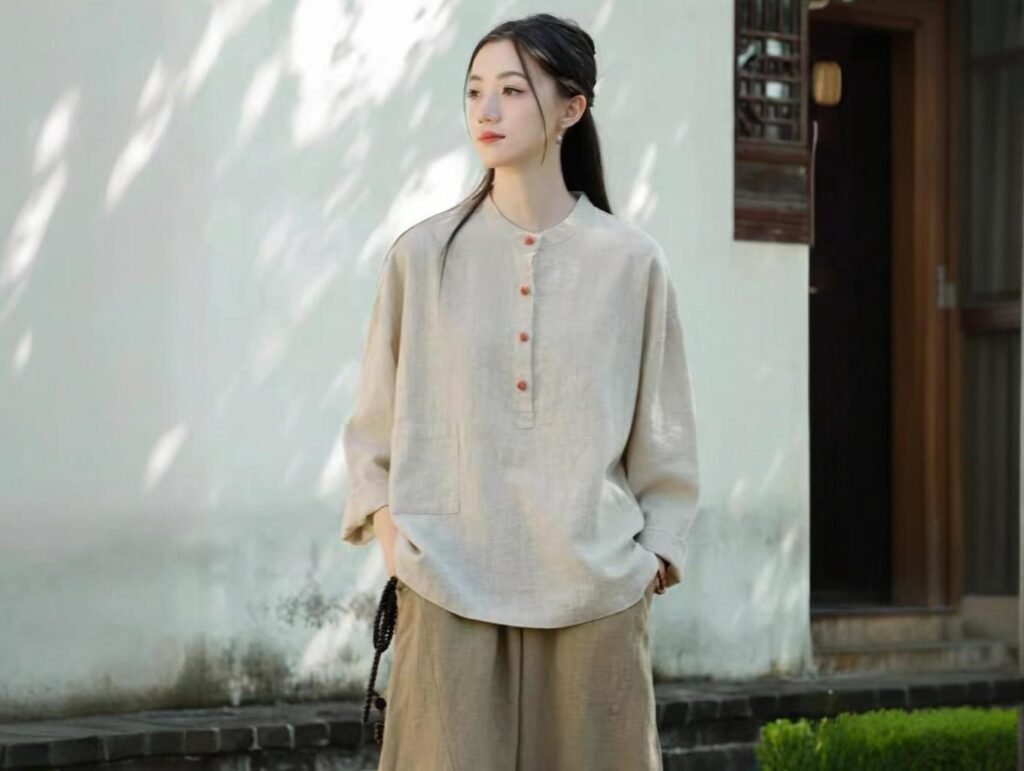
Ramie fibers are processed faster than hemp because they don’t require microbial retting, can be degummed more easily, and benefit from established infrastructure in China with high-speed decortication and bleaching systems.
Step-by-Step Process Comparison
1. Retting and Fiber Separation
| Processing Stage | Ramie | Hemp |
|---|---|---|
| Retting Required? | No | Yes (water or dew retting) |
| Time Required | 1–2 days (mechanical) | 5–15 days (traditional retting) |
| Degumming Process | Enzymatic or alkaline wash | Enzyme + chemical + softening |
- Ramie skips retting, saving up to 10 days in the fiber separation stage.
- Hemp must undergo microbial or chemical retting to loosen the fiber from the stalk.
2. Bleaching and Finishing
- Ramie is naturally white, so requires minimal bleaching.
- Hemp often contains residual lignin, requiring multiple wash cycles to achieve light tones or vibrant dyeability.
3. Mechanical Scalability
- Ramie has been processed in China since the 15th century. Its fiber processing has been fully industrialized.
- Hemp, by contrast, is still undergoing modernization in processing—especially outside China.
One mid-sized Chinese weaving mill (supplier for Zara and Mango) reported that ramie fabric rolls take 27% less time to finish than hemp—due to fewer chemical steps and higher raw material availability.
4. Machinery Compatibility
- Ramie can run on cotton, silk, and linen weaving machines with minimal adjustment.
- Hemp fibers often require pre-softening or cottonization to be machine-compatible.
What Agricultural Differences Impact Harvest and Availability?
Ramie has a faster growth cycle, multiple annual harvests, and greater climate resilience compared to hemp, which makes it more consistently available year-round—reducing raw material delays and bottlenecks.
Crop Efficiency and Fiber Availability
1. Harvest Frequency and Yield Per Year
| Crop | Harvests per Year | Time to Maturity | Typical Yield (per hectare/year) |
|---|---|---|---|
| Ramie | 3–6 | 45–60 days | 1,500–2,000 kg |
| Hemp | 1–2 | 90–120 days | 1,200–1,800 kg |
- Ramie’s ability to regrow from the same root system allows for multiple harvests annually in warm climates like southern China and Vietnam.
- Hemp must be re-seeded and rotated, requiring more planning and land usage.
2. Climate and Soil Adaptability
- Ramie thrives in tropical/subtropical climates, tolerates high humidity, and needs moderate rainfall.
- Hemp prefers temperate climates with dry harvesting windows, making it riskier during rainy seasons or monsoons.
3. Pest and Disease Resistance
- Ramie is naturally pest-resistant and does not require heavy pesticide inputs.
- Hemp is disease-resistant too, but sensitive to over-watering and fungal issues during retting.
4. Land Use and Crop Rotation
| Factor | Ramie | Hemp |
|---|---|---|
| Land Reuse (Same Field) | Yes (multi-year regrowth) | Limited (rotation needed) |
| Soil Depletion Risk | Low | Moderate |
| Intercropping Compatibility | Common (with rice, legumes) | Less common |
In high-output textile zones like Guangdong and Guangxi, ramie is intercropped with food crops, making it a dual-purpose farm commodity that’s always in supply—supporting speed and affordability for fabric makers.
Which Countries Are Leading Ramie Fabric Production and Why?
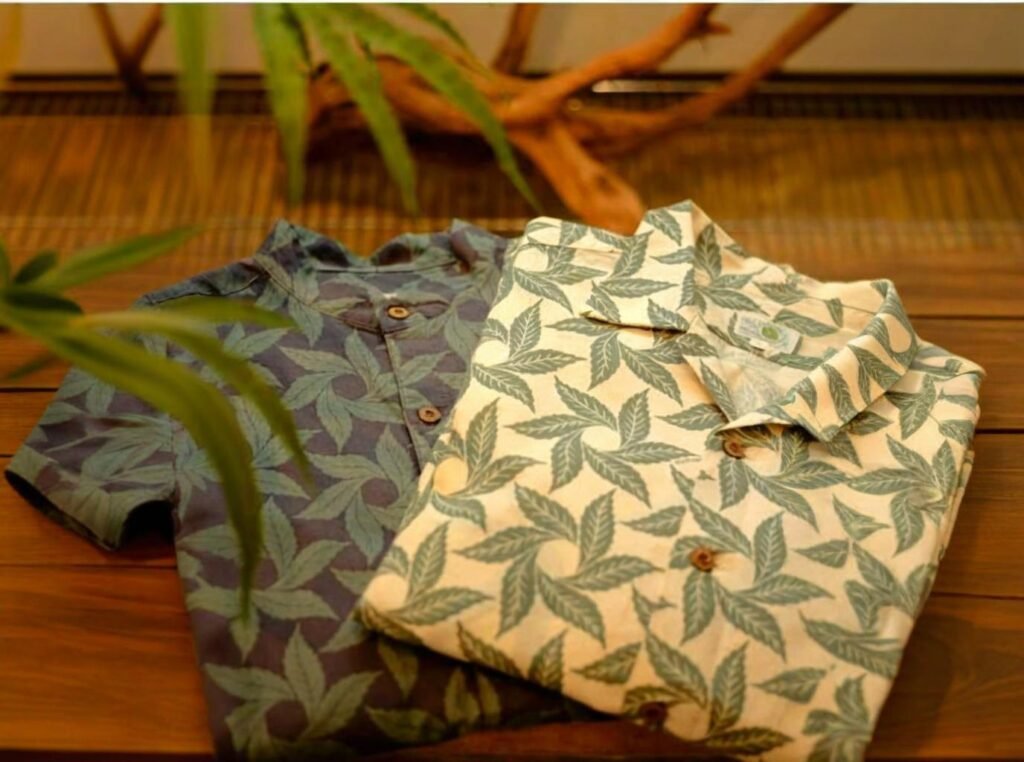
China leads global ramie production, with well-established supply chains, integrated spinning facilities, and government-backed agricultural programs—resulting in faster production and fabric lead times.
Global Ramie Production Landscape
1. Top Ramie-Producing Countries (2024)
| Country | Annual Output (Metric Tons) | Key Applications |
|---|---|---|
| China | 105,000 | Apparel, home textiles, yarns |
| Philippines | 8,000 | Craft fabric, ropes |
| Brazil | 4,500 | Agro-textiles, blends |
| India (trial stage) | <1,000 | Blending trials, government pilot |
🇨🇳 China’s Dominance: China controls over 90% of global ramie fabric exports, thanks to vertically integrated ecosystems (farms + fiber extraction + weaving + finishing in one province).
2. Why China’s Ramie Supply Chain Is So Efficient
- Ramie has been cultivated in China for over 1,000 years.
- Provinces like Hunan, Sichuan, and Jiangxi host specialized ramie industrial parks.
- Co-located fiber extraction and weaving reduce inter-factory logistics time.
| Feature | Ramie in China | Hemp in China |
|---|---|---|
| Processing Proximity | <50 km average from field to mill | 150–300 km in rural zones |
| Labor Skill Base | Specialized, trained | Growing, but less uniform |
| Certification Infrastructure | GOTS, OEKO-TEX, ISO 9001 certified | Developing for hemp |
3. Export Efficiency
- Most ramie suppliers in China already serve B2B buyers in Europe, the U.S., and Southeast Asia.
- Faster customs clearance due to established HS codes and export compliance documents.
4. Logistics and Shipping Reliability
- Ramie rolls are lighter than hemp, reducing freight cost and allowing for air freight in urgent orders.
- Consolidated shipping with other lightweight plant-based fabrics improves freight efficiency.
A U.S. eco-home brand reduced sourcing time by 37% after switching their tea towel production from hemp to ramie via a Chinese supplier—meeting a major retail launch deadline with days to spare.
Is Ramie Easier to Blend, Dye, and Finish Than Hemp?
Yes—ramie is easier to blend with other fibers, quicker to dye, and more responsive to finishing treatments than hemp, primarily due to its smooth, naturally white fiber and lower lignin content. These properties reduce processing time and improve color vibrancy, making ramie a time-efficient choice for B2B orders.
How Ramie Simplifies Downstream Fabrication
1. Blending Compatibility
| Fiber Blend Type | Ramie Compatibility | Hemp Compatibility |
|---|---|---|
| Cotton blends | Excellent | Requires cottonization |
| Polyester blends | Excellent | Possible, but less common |
| Silk/Linen blends | Very good | Less common due to coarseness |
| Spandex/elastane blends | Moderate | Difficult |
- Ramie’s fiber length and softness allow for direct spinning with cotton or polyester—a step that hemp typically requires pre-treatment for (such as cottonization).
- Ramie blends are commonly used in fashion tops, blouses, breathable linings, and even intimate wear.
2. Dyeability and Colorfastness
| Property | Ramie | Hemp |
|---|---|---|
| Natural Color | White to pale cream | Beige to light brown |
| Dye Uptake Time | 20–30% faster | Slower due to lignin |
| Color Vibrancy | High | Medium |
| Colorfastness (after 5 washes) | Excellent | Moderate |
- Because ramie is almost white in raw form, it requires less bleaching and allows vibrant, even dyeing—saving time and chemicals.
- Hemp’s higher lignin content can cause uneven dye absorption unless pre-treated.
3. Finishing Treatments
- Ramie takes well to:
- Softening agents
- Wrinkle-resistant coatings
- Enzyme washing for luxury textures
- The fiber holds structure but softens with each wash—ideal for mid-tier and premium segments.
A 2024 industry report by Textiles Today China found that ramie dyeing and finishing processes are on average 22% faster than comparable hemp batches due to the fewer pre-processing requirements.
How Do Supply Chain Efficiencies Influence Ramie Fabric Lead Times?
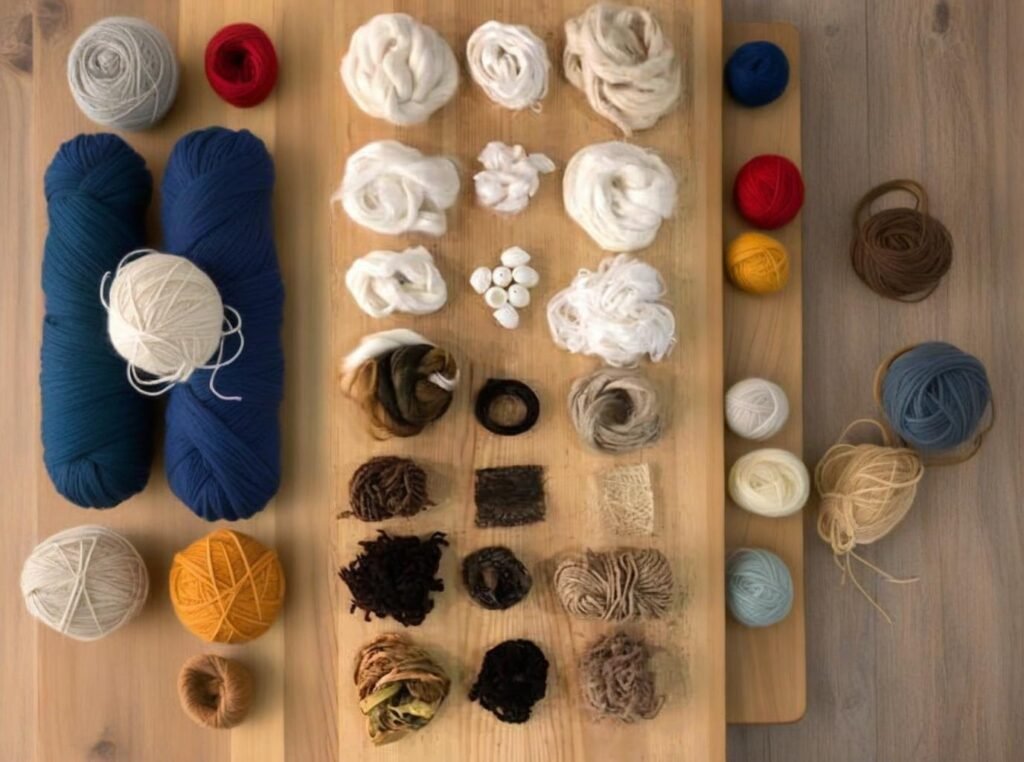
Ramie fabric benefits from superior supply chain efficiencies due to its concentrated production zones, co-located processing facilities, and consistent raw material availability—all of which reduce friction, improve predictability, and cut lead times by days or even weeks compared to hemp.
Structural Advantages That Make Ramie Faster
1. Vertical Integration of Suppliers
- In Chinese ramie clusters, farming, fiber extraction, spinning, weaving, and finishing are often performed within one industrial park or province.
- For hemp, these stages are frequently spread across different suppliers and provinces.
| Supply Chain Factor | Ramie Supply Chain | Hemp Supply Chain |
|---|---|---|
| Vertical Integration | Common (esp. in China) | Less common |
| Transport Time Between Steps | <2 days | 4–7 days |
| Fabric Roll Readiness | 10–15 days | 18–25 days |
2. Production Scalability
- Ramie mills are accustomed to small MOQs and frequent sample requests due to long-standing relationships with exporters.
- Hemp mills are still scaling and often prioritize large batch clients or government orders.
3. Inventory and Yarn Availability
| Material | Avg. Yarn Inventory | Stock Dyed Options | Lead Time for Sampling |
|---|---|---|---|
| Ramie | High | Yes | 3–7 days |
| Hemp | Medium to Low | Limited | 10–15 days |
- Many Chinese ramie mills keep base yarns in stock, allowing on-demand weaving and dyeing.
- For hemp, yarn spinning is still frequently made-to-order, introducing delays.
4. Export Infrastructure and Compliance
- Ramie has mature documentation systems (customs HS codes, EU REACH compliance, etc.).
- Hemp may require additional scrutiny in customs (especially in North America), due to past cannabis regulations—even for industrial fiber.
A Canadian eco-lifestyle company needed 300 meters of lightweight plant-based fabric for a pop-up campaign. Szoneier’s ramie line was ready to ship in 8 days—including weaving, dyeing, and finishing—whereas hemp alternatives quoted 20+ days.
Are MOQs and Custom Orders More Flexible with Ramie?
Yes—ramie fabric generally allows for lower minimum order quantities (MOQs) and faster customization options compared to hemp, thanks to broader stock availability, fewer processing constraints, and factory readiness for small-batch B2B orders.
MOQ and Customization Advantages of Ramie
1. Lower Minimum Order Quantities
| Fabric Type | MOQ at SzoneierFabrics | Industry Standard MOQ Range |
|---|---|---|
| Ramie Fabric | 100 meters/color | 300–500 meters |
| Hemp Fabric | 200–300 meters/color | 500–1000 meters |
| Ramie Garments | 50 pcs/style (custom) | 100–300 pcs/style |
| Hemp Garments | 100 pcs/style (custom) | 200–500 pcs/style |
- Ramie allows for faster prototyping and limited-edition product runs.
- Ideal for independent brands, capsule collections, and short-season SKUs.
2. Custom Dyeing and Weaving Options
- Stock-dyed yarns available in dozens of colors with 3–5 day prep times.
- Custom weaves (e.g., dobby, herringbone, gauze) can be executed under 300 meters.
A Paris-based menswear brand used SzoneierFabrics’ ramie program to test five custom weaves in 120-meter batches. The result? They launched 3 successful SKUs within 6 weeks—something previously impossible with hemp due to MOQ and timing.
3. Fabric Finish Flexibility
- Ramie supports:
- Reactive and pigment dyeing
- Digital sublimation (for blends)
- Antibacterial finishes
- Natural enzyme softening
- All of these can be applied in smaller quantities without impacting turnaround.
4. B2B Partnering Options for Flex Orders
- Szoneier offers:
- White label development
- Private label packaging
- Sampling programs (free under certain MOQs)
What Types of B2B Buyers Benefit Most from Short Ramie Lead Times?
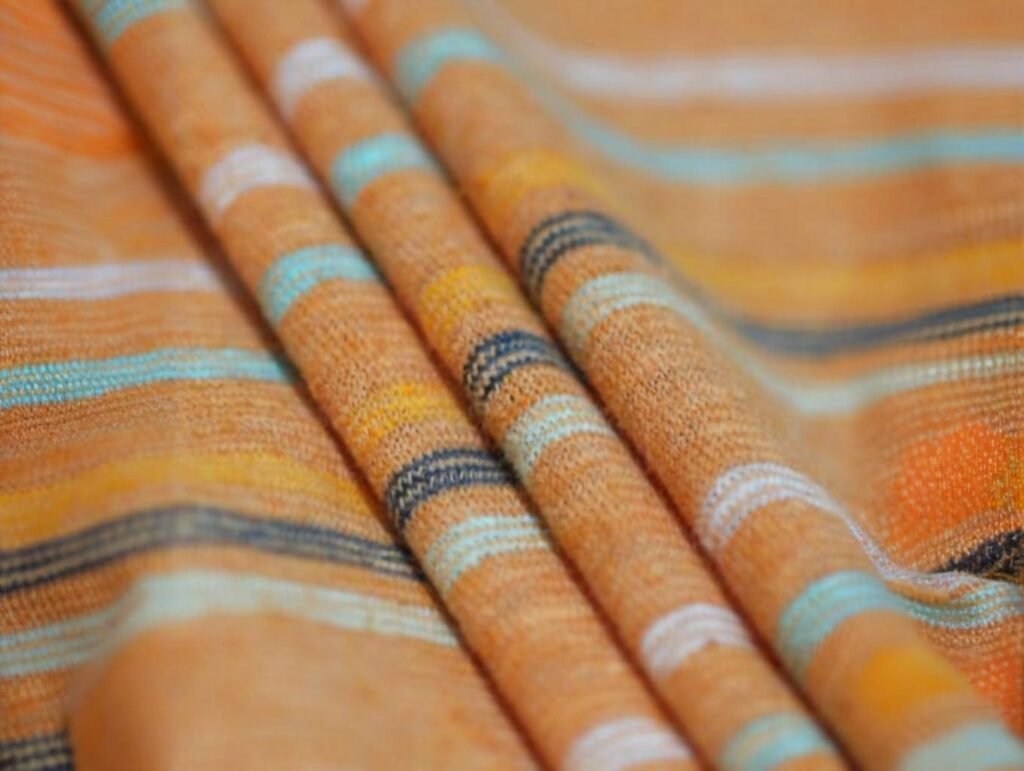
B2B buyers operating under fast product development cycles—such as fashion startups, eco-home brands, wellness retailers, and sourcing agents—gain the most value from ramie’s short lead times and flexibility.
Buyer Personas That Fit Ramie’s Advantages
1. Emerging Fashion Brands
- Need fast development cycles and limited quantity production.
- Ramie is perfect for lightweight shirts, tops, dresses, and linings.
| Buyer Type | Product Use Case | How Ramie Helps |
|---|---|---|
| Fashion Startups | Tops, capsule runs | Low MOQ, fast sample delivery |
| DTC Apparel Brands | Loungewear, breathable styles | Blend-ready and wrinkle resistant |
2. Eco-Home Goods Retailers
- Use ramie for:
- Tea towels
- Napkins
- Lightweight curtains
- Ramie’s softness and dyeability offer an earthy, natural aesthetic.
3. Sourcing Agents
- Serve Western buyers needing short runs or fast prototyping.
- Prefer suppliers like SzoneierFabrics who can handle backend certifications, lab testing, and logistics.
4. Promotional and Event Product Companies
- Ramie totes, bags, or scarves are ideal for eco-branding campaigns.
- These buyers value:
- Fast production
- Private labeling
- Visual appeal (softness, luster, printability)
According to a 2023 survey by EcoTextile Journal, 72% of EU-based sourcing firms listed “lead time under 15 days” as their top deciding factor when selecting fabric suppliers for new product development.
Ready to Get a Faster Start with Ramie Fabric?
If your project demands quick turnaround, custom design flexibility, and sustainable performance—ramie may be the perfect fit.
At SzoneierFabrics, we specialize in:
- ✅ Custom ramie fabric development with MOQs as low as 100 meters
- ✅ Ready-to-dye stock and fast sampling in 3–7 days
- ✅ Blended yarn options (ramie/cotton, ramie/polyester, ramie/linen)
- ✅ Full support for private labeling, dye testing, and packaging customization
- ✅ Certifications including OEKO-TEX, GOTS, and REACH-compliant finishes
We’ve helped hundreds of B2B customers—from emerging fashion labels to eco-focused household brands—develop reliable, fast-moving fabric supply chains that scale.
Contact SzoneierFabrics today to request free ramie fabric swatches, discuss your custom MOQ needs, or get a production quote with a short lead time.

